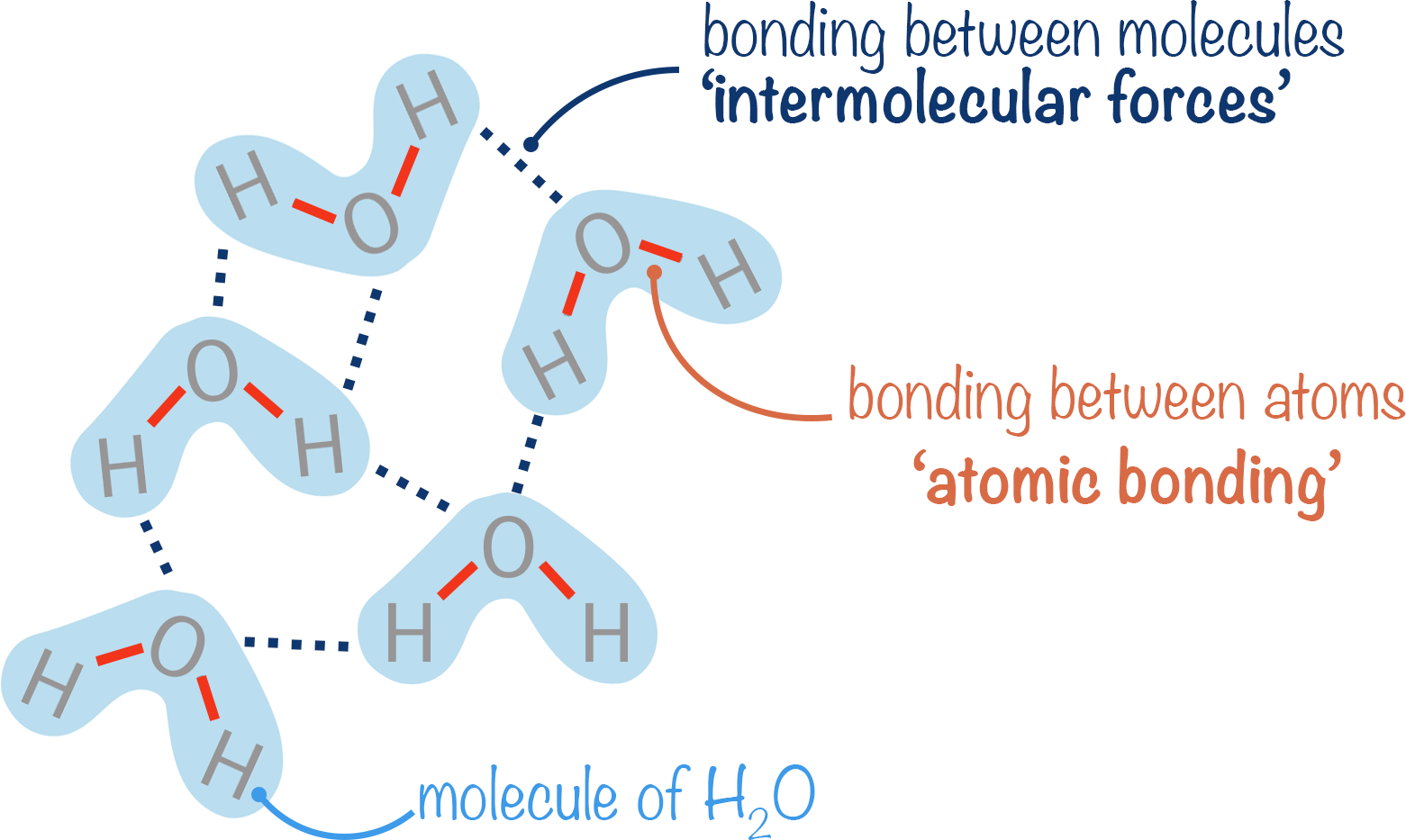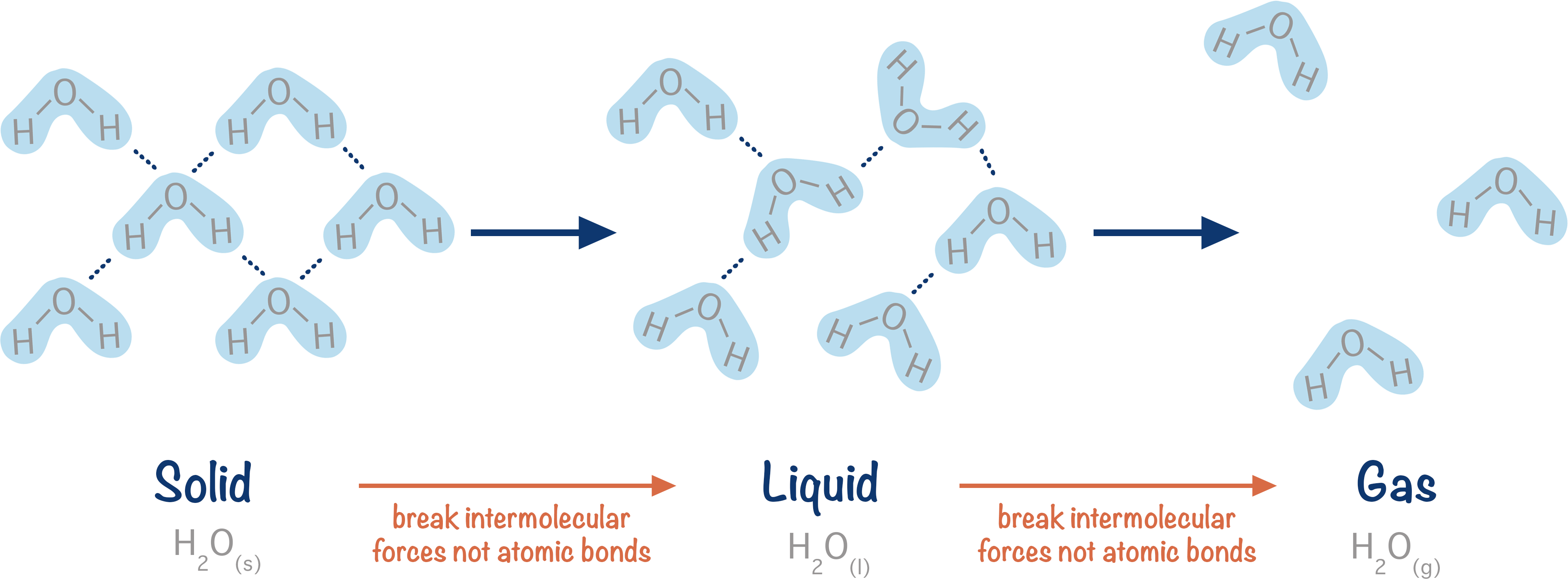Quick Notes Bonding
- Bonds between atoms are called atomic bonds.
- Forces between molecules are called intermolecular forces.
- Intermolecular forces are broken and formed when molecular substances change state (solid, liquid and gas).
Full Notes Bonding
There are only 118 elements in the periodic table, yet there are millions of different substances on planet earth. The abilities of elements to react together and ‘combine’ with each other give rise to these millions of different substances.
Atoms ‘combine’ by forming bonds between themselves. A small group of atoms (two or more) bonded together in a unit forms a molecule. When atoms of different elements combine and bond, a compound is formed.
Atomic bonds are bonds that exist between atoms.
Intermolecular forces are forces that arise between molecules. These forces ‘hold’ molecules together and cause them to exist in either a solid or liquid state.

There are three types of atomic bonding:
There are three key types of intermolecular forces:
Instantaneous, temporary induced, dipole-dipole
Molecular substances are made of molecules (small groups of atoms covalently bonded together). When molecular substances melt or boil, it is intermolecular forces between the molecules that are broken. The atomic bonds within the molecules remain unchanged.

